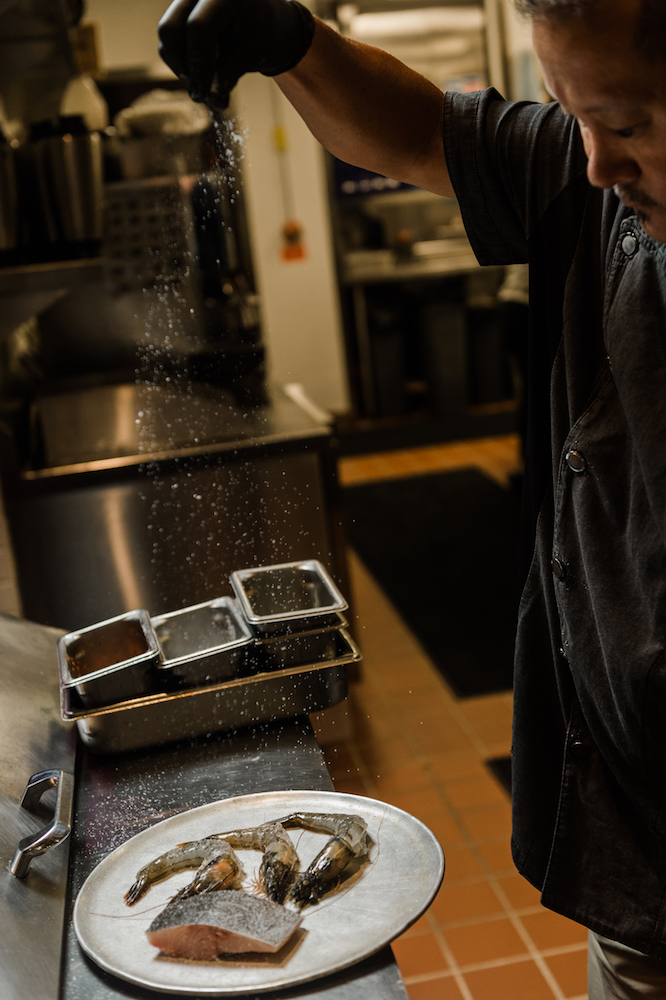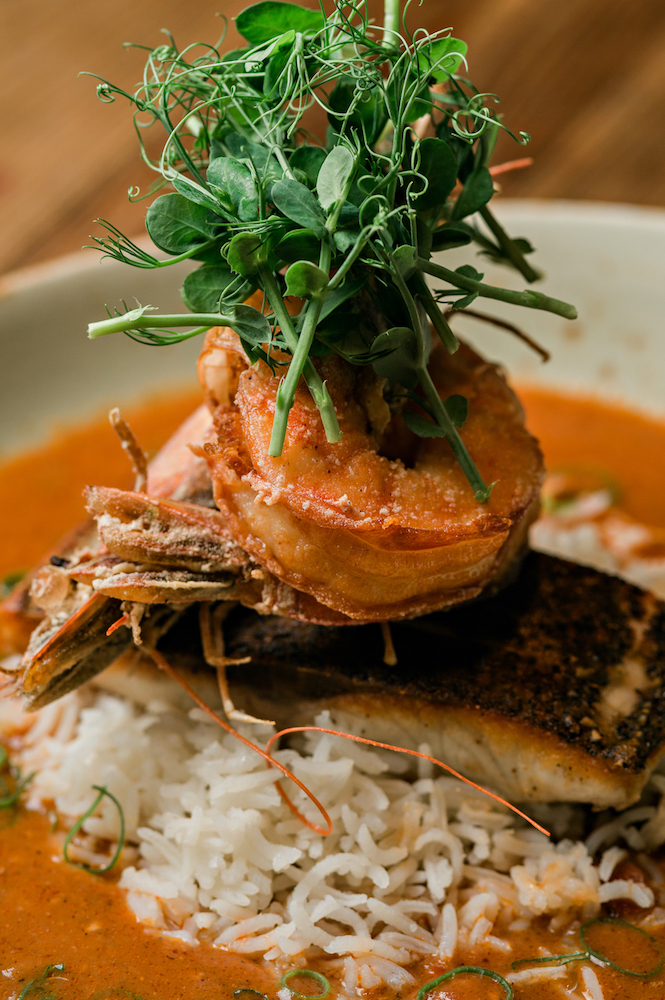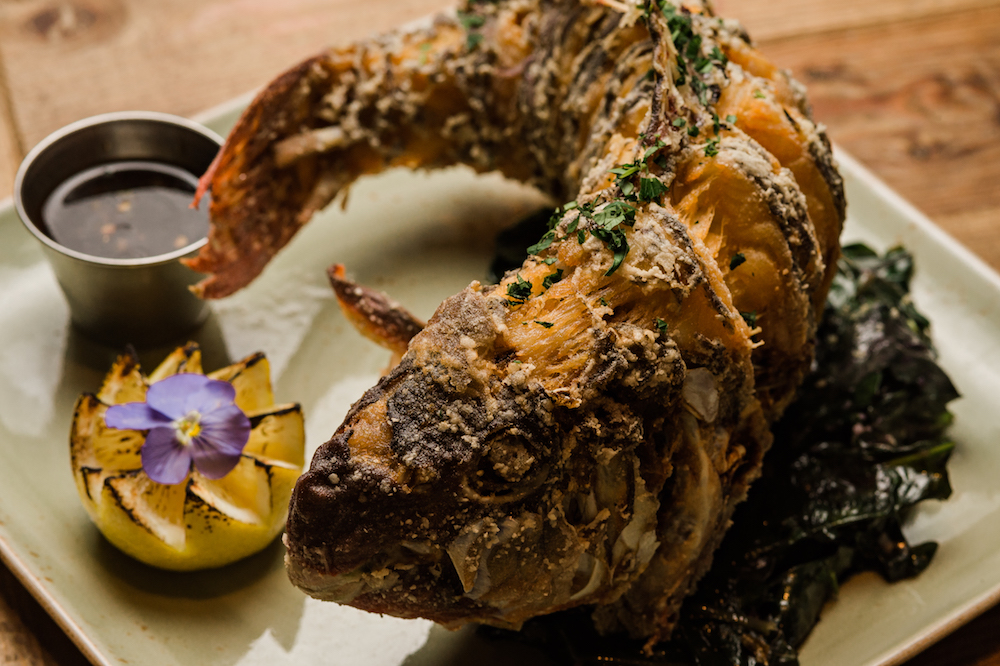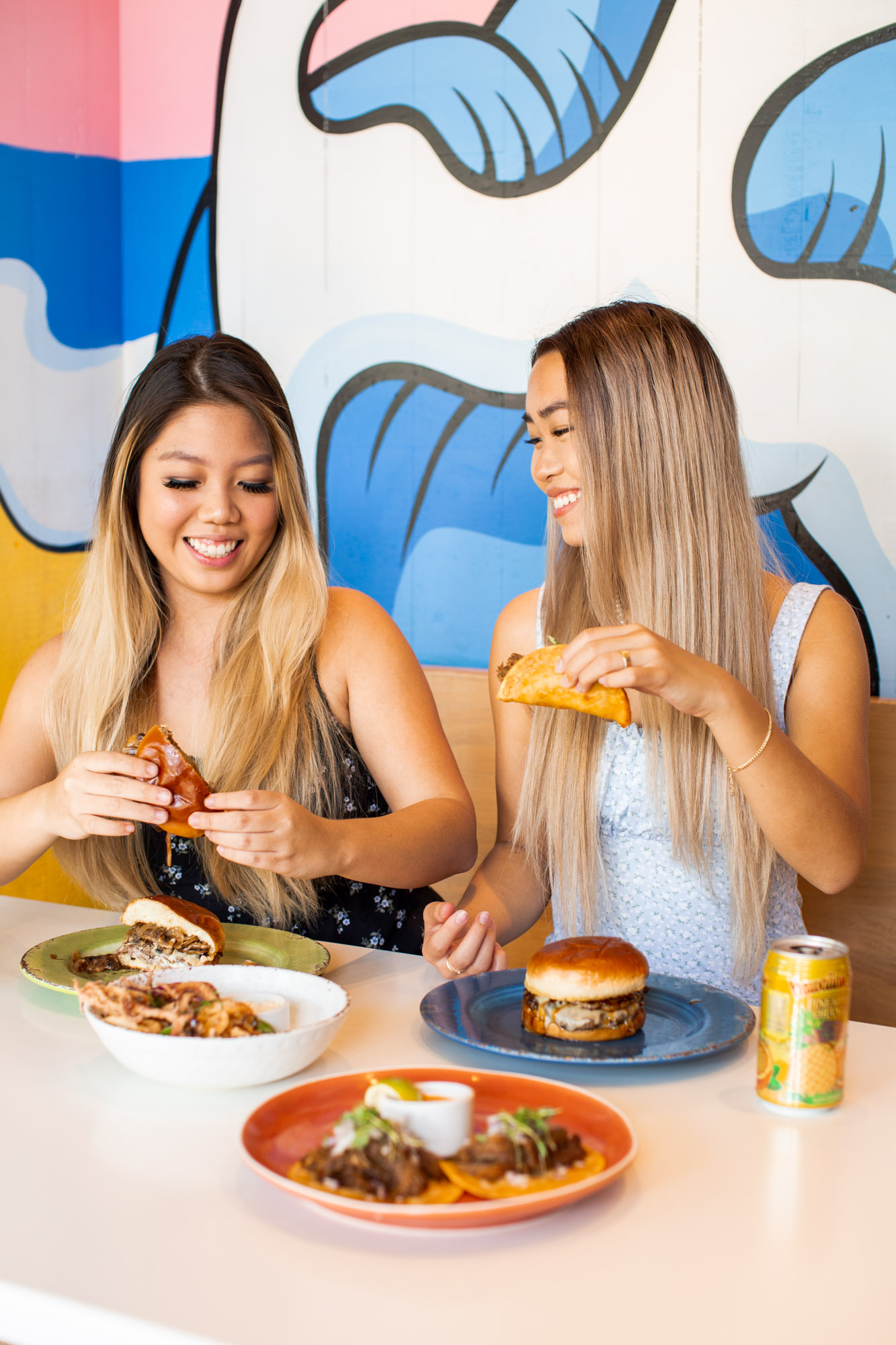
Bait to Plate

We sat down with Herringbone Waikiki Executive Chef Gary Tamashiro for an inside look at the restaurant’s sea-to-table fare.
✏️ LAUREN MCNALLY
📸 JOHN HOOK
サンセットの物語
半世紀前にワイキキでポリネシアンショーの基盤を築いた舞踏団が、その誕生の地、インターナショナルマーケットプレイスに帰還。毎日夕方に開催される無料のショーをお見逃しなく。
Chef Gary Tamashiro didn’t waste any time finding his footing in the culinary world after graduating from the food service program at Leeward Community College. “A friend of mine told me about this guy, Alan Wong, who was going to open a restaurant on the Big Island,” says the Pearl City High School grad. “I’d never heard of him, but I said, ‘OK, let’s go.’”
It was 1989, only a couple of years before Alan Wong and 11 other Hawai‘i chefs—Roy Yamaguchi, Peter Merriman, Sam Choy, and George Mavrothalassitis, to name a few—officially branded the culinary style known as Hawai‘i Regional Cuisine, an initiative to promote locally sourced ingredients and share Hawai‘i’s unique culinary identity with the world. Tamashiro spent the next four years working alongside the soon-to-be star restaurateur at The Canoe House at Mauna Lani Bay Hotel & Bungalows on Hawai‘i Island before deciding to expand his horizons beyond Hawai‘i.


Tamashiro went on to hone his skills on the mainland for more than two decades before returning home, a period that included opening Michael Mina’s acclaimed seafood restaurant Aqua at Bellagio. “That was one of my favorite experiences working with seafood,” he says. Later while working for Hakkasan Group, Herringbone’s parent company, the opportunity arose to help open Herringbone Waikiki at International Market Place. “I knew I eventually wanted to come back someday, so this was a good opportunity,” Tamashiro says.
Herringbone’s fish-meets-field credo combines farm-to-table fare and seafood fresh from Hawai‘i waters, plus sustainable front-of-house practices that recently earned Herringbone Waikiki its certification as an ocean-friendly restaurant by the Surfrider Foundation O‘ahu Chapter. Ahead, Tamashiro talks about the importance of sustainable fishing practices, the future of fusion cuisine, and how he hasn’t let a shellfish allergy get in the way of his love for seafood.

It’s been nearly 30 years since Alan Wong and other local chefs put Hawai‘i Regional Cuisine on the map. What does fusion cuisine look like today? How has it evolved and where do you see it going?
Hawai‘i has always been a melting pot of different cultures and backgrounds, but I think fusion cuisine today is stronger than ever. When I was on the mainland, there was this Korean taco joint where, if you ordered a burrito, they’d put bulgogi in it. Another popular thing [on the mainland] was sushi burritos. In Hawai‘i, we’re starting to see the same sort of things. At the Hale ‘Aina Awards, I met the chef from Square Barrels, who is Caucasian and Nepali. So he made a dish that reflects that—smoked meat for his Caucasian side and soy bean salad for his Nepali side.
A new generation of chefs are adding their own twists, bringing their nationalities into their cooking. They’re influenced by the type of food they grew up with. That’s what I do as well. I’m Japanese, so there’s a lot of Japanese influence on the menu here. This is the kind of food that I grew up with. It’s the kind of food that I like, so that’s what I put on our menu.

Herringbone bills its menu as California coastal cuisine. How did you interpret that for Hawai‘i?
All Herringbone locations are about 75 percent standard California coastal cuisine and 25 percent by region. So about 25 percent of our menu features local ingredients, and we try to support local as much as possible. Bottom fish isn’t available year round in Hawai‘i, but we try to source it locally whenever we can: opaka, onaga, u’u. Almost all of the seafood at Herringbone is local.
What are some of your favorite seafood ingredients to work with?
Oysters, crab, lobster—shellfish in general. It’s funny, I’m actually allergic to shellfish. It makes my throat itchy, but I love it so much, I still eat it. Ever since I was young, I’ve loved seafood.
Where do you source your ingredients from?
A lot of our produce comes from Mari’s Gardens in Mililani—there’s a salad on our menu called Mari’s Garden Farm Greens—and we work with two seafood vendors, Tropic Fish Hawaii and Garden & Valley Isle Seafood.

Why did you choose to work with those particular seafood purveyors? What do they do right in terms of responsible sourcing?
We have a great relationship with Tropic Fish Hawaii—our rep, Terry [Togashi], goes above and beyond for us. Both our vendors bring a lot to the table. Garden & Valley Isle Seafood, for example, are among the few that can get us Kualoa Ranch oysters. And they’re really supportive of sustainable fishing practices. Some fishers try to sell them onaga (long-tail red snapper) that were caught before they’ve had time to mature, and Garden & Valley will reject them, saying they’re too small. I go to some of the farmers markets out here, and I see people selling these small, little aku (skipjack tuna). It’s sad to see people abusing the ocean that way for money.
Right—fish populations can’t sustain themselves if you catch the fish faster than they’re able to reproduce. Have you personally seen the effects of overfishing?
My grandfather was a fisherman by trade, and I’ve seen pictures of the fish he caught. It’s not like that anymore. If we’re not responsible now about how we source our seafood, kids in the future might not have the opportunity to [enjoy the same abundance].








